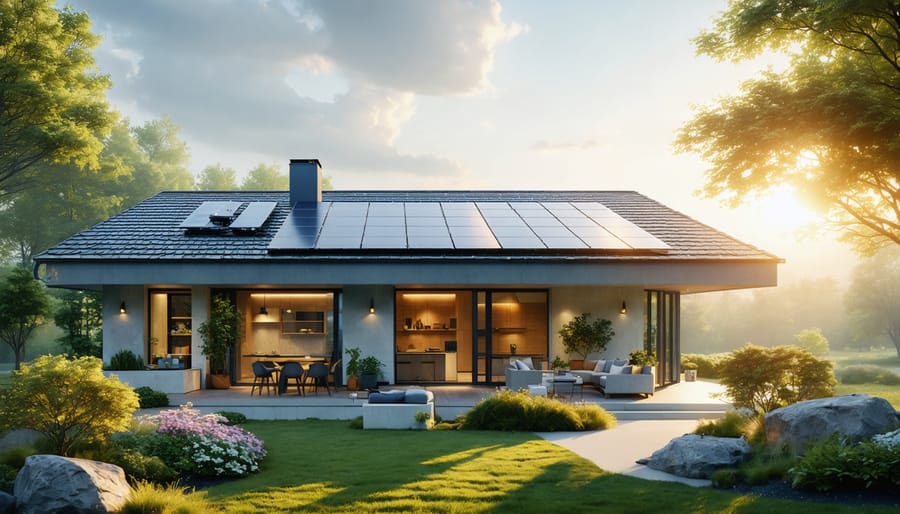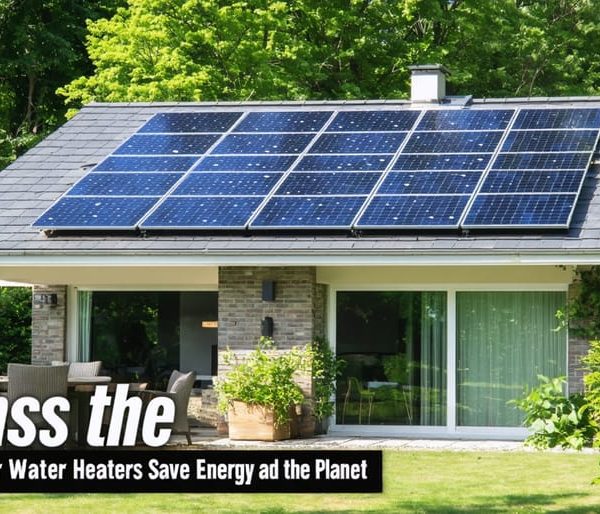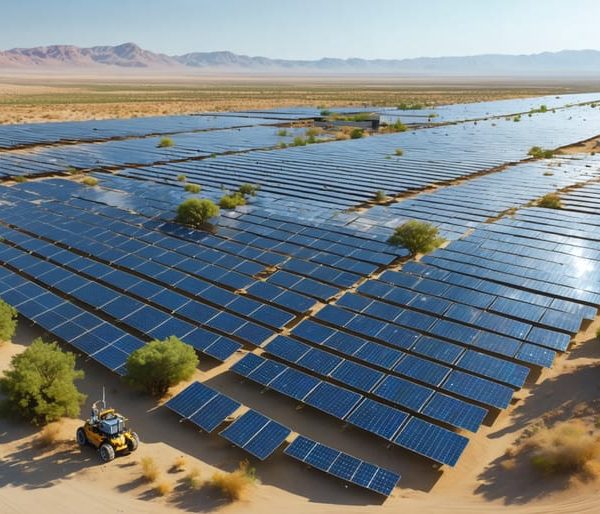Solar-Powered Water Boilers: Cut Your Energy Bills While Saving the Planet
Harness the sun’s boundless energy to slash your water heating bills and reduce your carbon footprint with a solar-powered water boiler system. This innovative technology transforms ordinary sunlight into reliable hot water, providing an eco-friendly alternative to traditional water heaters that can cut energy costs by up to 80%. Unlike conventional systems that constantly consume electricity or gas, solar water boilers operate silently and efficiently, capturing thermal energy through advanced solar collectors to heat your water throughout the day.
Modern solar water boilers have evolved significantly, now featuring smart controllers, efficient heat exchangers, and backup systems that ensure hot water availability even during cloudy days. Whether you’re retrofitting an existing home or planning a new construction project, these systems offer a practical path to sustainable living without sacrificing comfort or convenience. With minimal maintenance requirements and an average lifespan of 20+ years, solar water boilers represent a smart investment in both environmental stewardship and long-term cost savings.
By switching to solar water heating, an average household can prevent up to 2.5 tons of carbon dioxide emissions annually while enjoying consistent hot water supply powered by clean, renewable energy. Join the growing community of homeowners embracing this sustainable technology and take control of your energy future today.
How Solar Water Boilers Transform Sunlight into Hot Water
The Solar Collection Process
The heart of a solar-powered water boiler lies in its collection system, which efficiently captures and converts sunlight into usable heat energy. Modern solar water heating methods typically use either flat-plate collectors or evacuated tube collectors. Flat-plate collectors consist of a dark-colored absorber plate beneath a transparent glass cover, while evacuated tube collectors feature rows of glass tubes containing copper pipes.
These collectors are strategically positioned on your roof or in an open area where they receive maximum sunlight exposure throughout the day. The absorber surface, typically coated with a special material, captures solar radiation and converts it into heat. This heat is then transferred to a fluid – usually water or a heat-transfer fluid – that circulates through the copper pipes within the collector system.
The fluid, now heated by solar energy, flows into an insulated storage tank where it either directly heats your water supply or, in indirect systems, transfers its heat through a heat exchanger. This continuous process ensures a steady supply of hot water while harnessing free, renewable energy from the sun.
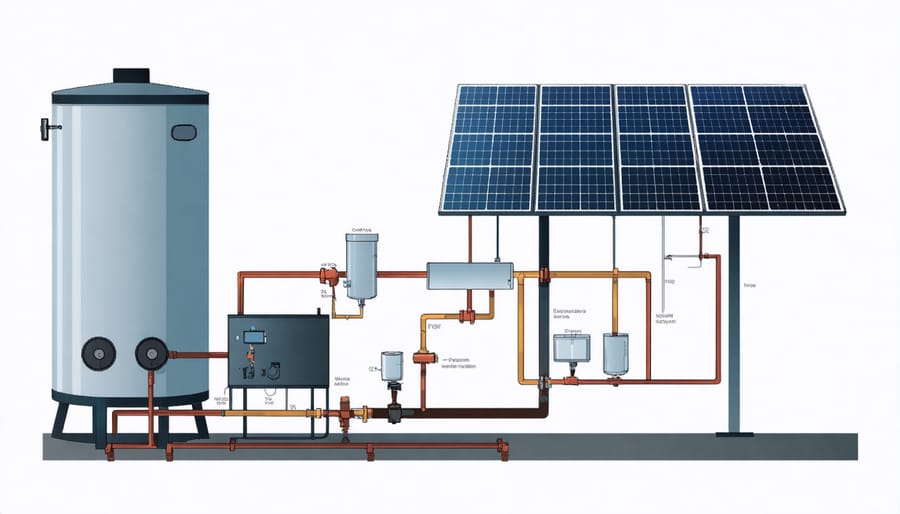
Heat Transfer Systems
Solar-powered water boilers rely on efficient heat transfer systems to move thermal energy from solar collectors to your water supply. The most common method is passive solar water heating, which uses a heat-transfer fluid (usually a non-toxic antifreeze solution) to carry heat from the collectors to your water tank.
This fluid circulates through a closed loop system, first absorbing heat from the solar panels, then flowing through a heat exchanger inside your water tank. As it passes through the heat exchanger, the thermal energy transfers to the surrounding water, warming it for your household needs.
Some systems use direct circulation, where water flows directly through the solar collectors. While simpler, this method works best in warm climates where freezing isn’t a concern. For added efficiency, many modern systems incorporate thermal storage tanks with special insulation to maintain water temperature overnight or during cloudy periods.
The entire process happens automatically, controlled by small pumps and sensors that ensure optimal heat transfer based on sunlight availability and water demand.
Benefits That Make Solar Water Boilers Worth It
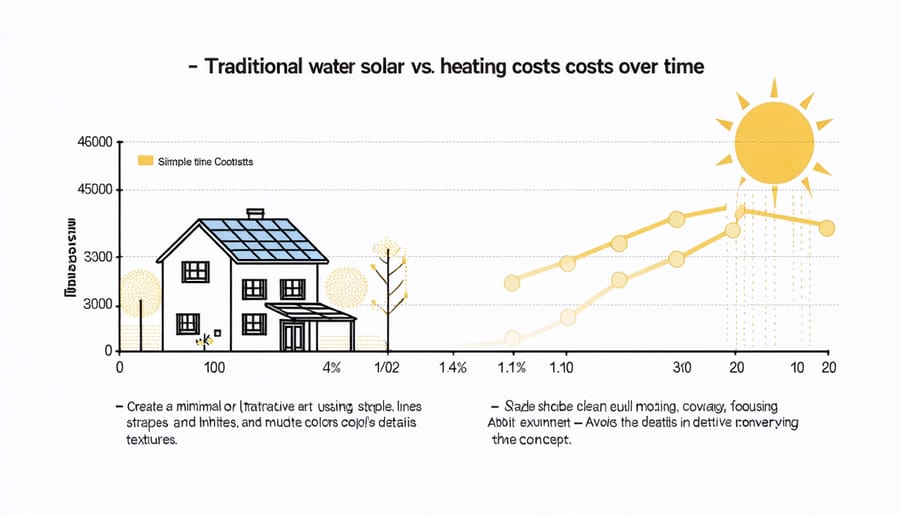
Energy Cost Reduction
Installing a solar-powered water boiler can significantly reduce your monthly energy expenses, with many homeowners reporting savings of 50-80% on their water heating costs. The exact savings depend on various factors, including your geographical location, daily hot water usage, and current energy rates.
Let’s break down the potential savings: For a typical family of four, traditional electric water heating can cost between $600-$800 annually. By switching to a solar water boiler, these costs can be reduced to $120-$240 per year, resulting in substantial savings over time. This impressive return on investment makes solar water boilers an attractive option for cost-conscious homeowners.
The savings are even more substantial in regions with high electricity rates or abundant sunshine. For example, households in California or Arizona might see their investment recovered within 3-5 years through energy cost reduction alone. During peak summer months, when solar energy is most abundant, some users report nearly zero energy costs for water heating.
Commercial properties and larger establishments can expect even greater savings, with some businesses reducing their water heating expenses by up to 90%. These savings become more significant over time as traditional energy costs continue to rise, while solar energy remains free after the initial installation.
Environmental Impact
Solar-powered water boilers represent a significant step forward in reducing our environmental footprint. By harnessing the sun’s energy instead of relying on fossil fuels or electricity from the grid, these systems can dramatically cut down household carbon emissions. A typical solar water boiler can prevent up to 2.5 tons of CO2 emissions annually – equivalent to planting about 40 trees!
Beyond carbon reduction, these systems help preserve precious natural resources. Traditional water heating accounts for roughly 18% of a home’s energy use, but solar boilers can reduce this dependency by 50-80%. This means less strain on power plants and fewer natural resources consumed for energy production.
The environmental benefits extend throughout the system’s lifecycle. Most solar water boilers are built to last 20-25 years, and their components are largely recyclable. Unlike conventional water heaters that need replacement every 8-12 years, this longer lifespan means less waste in landfills and reduced manufacturing impacts.
Water conservation is another key advantage. Solar water boilers can be designed with closed-loop systems that recirculate water, minimizing waste. Some advanced models even include rainwater harvesting capabilities, further reducing your environmental impact.
By choosing a solar water boiler, you’re not just saving money – you’re actively contributing to a more sustainable future for generations to come.
Installing Your Solar Water Boiler
Location and Positioning
Proper placement of your solar-powered water boiler is crucial for maximizing its efficiency and performance. The ideal location should receive maximum sunlight exposure throughout the day, typically on a south-facing surface in the Northern Hemisphere. Aim to position the solar collectors at an angle equal to your geographical latitude, plus 15 degrees in winter or minus 15 degrees in summer, for optimal sun absorption.
Avoid areas shaded by trees, buildings, or other structures, as even partial shade can significantly reduce system efficiency. Consider seasonal changes in sun position and potential future obstructions when choosing your installation spot. The roof is often the best location, but ground-mounted systems can work well if you have sufficient open space.
Keep the distance between solar collectors and the storage tank as short as possible to minimize heat loss through piping. The storage tank should be placed in an insulated area, preferably indoors or in a weather-protected space. For split systems, ensure the tank is positioned above the collectors to enable natural thermosiphon flow.
When planning the installation, consider local building codes and HOA restrictions. You’ll also want to account for maintenance accessibility – ensure there’s enough space around the system for regular inspections and repairs. If you’re installing multiple collectors, arrange them in a way that prevents one panel from shading another.
The mounting structure should be sturdy enough to support the system’s weight and withstand local weather conditions, including wind loads and snow accumulation. Professional installers can help determine the best positioning based on your specific location and requirements.
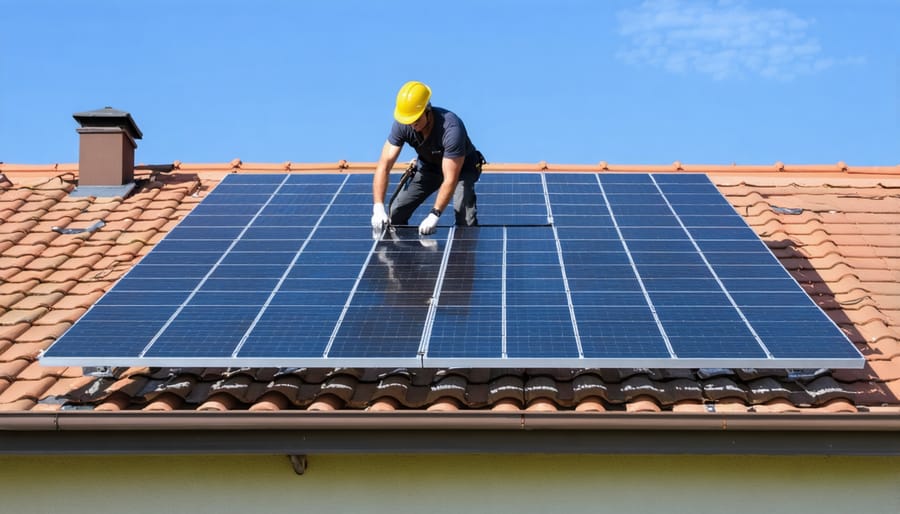
Professional vs DIY Installation
When it comes to installing a solar-powered water boiler, you have two main options: professional installation or the DIY approach. Each path has its own set of considerations worth exploring.
Professional installation offers several advantages. Certified installers bring expertise in both solar technology and plumbing systems, ensuring your system meets local building codes and safety standards. They can properly size the system for your specific needs, handle complex roof installations, and often provide warranties on their work. Many installers also help with securing permits and applying for available tax incentives or rebates.
For those considering the DIY route, it’s essential to have a solid understanding of both plumbing and basic electrical work. While DIY installation can save money upfront, it requires careful planning and research. You’ll need to source all components independently, ensure compatibility, and obtain necessary permits yourself. The installation typically involves mounting solar collectors, connecting plumbing lines, installing the storage tank, and setting up the control system.
Key requirements for DIY installation include:
– Basic plumbing and electrical skills
– Proper tools and safety equipment
– Knowledge of local building codes
– Understanding of solar angle calculations
– Physical ability to work on roofs
– Time commitment for research and installation
While DIY installation can be rewarding and cost-effective, consider your skill level honestly. Complex installations, especially in multi-story buildings or with challenging roof configurations, are better left to professionals. Remember that improper installation can lead to system inefficiency, damage, or even safety hazards.
Maintenance and Optimization Tips
Regular Maintenance Schedule
Keeping your solar-powered water boiler in top condition requires regular solar water system maintenance. Here’s your essential maintenance timeline to ensure optimal performance:
Monthly Tasks:
• Check solar panels for dust, leaves, or debris
• Clean panels with soft brush and water
• Inspect mounting brackets and tighten if needed
• Monitor system pressure readings
• Check for visible leaks around connections
Quarterly Tasks:
• Test pressure relief valve
• Inspect insulation on pipes and tanks
• Clean collector glass thoroughly
• Check antifreeze levels (in cold climates)
• Verify controller settings and displays
Annual Tasks:
• Professional inspection of entire system
• Replace anode rod if necessary
• Test all safety devices
• Check glycol concentration
• Flush storage tank to remove sediment
Emergency Checks (After Severe Weather):
• Inspect panels for storm damage
• Check roof mounting integrity
• Verify collector alignment
• Test system operation
• Look for water infiltration
Remember to keep a maintenance log and schedule professional inspections every 12-18 months. Most tasks can be done yourself, but always consult a certified technician for complex issues or if you’re unsure about any procedure. Regular maintenance extends system life and maintains efficiency, ensuring you get the most from your investment.
Performance Optimization
To maximize your solar water boiler’s performance, proper positioning is crucial. Place solar collectors where they receive maximum sunlight exposure, typically facing south in the Northern Hemisphere. Ensure there’s no shade from trees or buildings during peak sunlight hours (10 AM to 4 PM).
Insulation plays a vital role in maintaining efficiency. Check that all pipes and storage tanks are well-insulated to prevent heat loss. Consider using high-quality insulation materials rated for extreme temperatures, and regularly inspect for any damage or degradation.
Monitor your usage patterns and adjust accordingly. Schedule high-water-usage activities like laundry or dishwashing during peak sunlight hours when the system is operating at maximum efficiency. In winter months, consider using a timer to start heating water earlier in the day to compensate for reduced sunlight.
Regular maintenance enhances performance significantly. Clean solar collectors every three months to remove dust, leaves, and bird droppings that can reduce efficiency. Check the heat transfer fluid levels annually and top up if necessary. Inspect seals and connections for any leaks that could impact system performance.
Consider installing a smart monitoring system to track performance metrics. These systems can alert you to potential issues before they become problems and help you optimize usage based on weather patterns and your household’s needs.
For cloudy days, implement a backup strategy. While most systems include electric backup, using it strategically during extended periods of low sunlight helps maintain efficiency without compromising your sustainable energy goals.
As we’ve explored throughout this article, solar-powered water boilers represent a significant step forward in sustainable home technology. These innovative systems not only help reduce your carbon footprint but also offer substantial long-term savings on energy bills. By harnessing the sun’s free and abundant energy, homeowners can enjoy hot water while contributing to a cleaner environment.
The benefits are clear: reduced energy costs, decreased environmental impact, and reliable hot water supply even during power outages. With various models available to suit different needs and budgets, there’s a solar water boiling solution for every home. Modern systems are more efficient and affordable than ever before, making now the perfect time to make the switch.
Whether you’re motivated by environmental concerns, looking to cut utility costs, or simply want to embrace innovative technology, a solar water boiler is a smart investment in your home’s future. The initial setup costs are often offset by government incentives and long-term energy savings, while regular maintenance is surprisingly straightforward.
Ready to take the next step? Consider consulting with local solar installers who can assess your specific needs and recommend the best system for your home. By choosing a solar water boiler, you’re not just upgrading your home’s infrastructure – you’re investing in a sustainable future for generations to come. Join the growing community of homeowners who are leading the way in renewable energy adoption.

